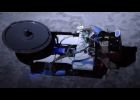Vampyroteuthis as a bioluminescent lighthouse to think under the livings. Some mutations: From 1981 to 1991
This contribution is about a translation of the book Vampyroteuthis Infernalis into a dialogic media. In Vampyroteuthis Infernalis, Vilém Flusser describes an abyssal creature, opposite in every point with humans. From 1981 to 1991, the book mutates within the writing process of Flusser engaging with letters, oral dialogues, essays, courses and translations. There is a genealogy of the Vampy and of the Vampyroteuthian model from the French version to the Brazilian one. I will call this model Vampy, a borrowed term from the relationship between Louis Bec and Vilém Flusser (Marburger 2016). The article emphasizes Flusser’s programmatic vision in the Vampyroteuthis. How can the philosophy of Flusser’s programs, embodied in the Vampyroteuthis, serve us as a lighthouse in the “moment of the living” (Worms 2016) that we are going through nowadays? Taking into account the three different versions of the vampy, from the French to the Brazilian one, I propose to contextualize the Vampyroteuthis inputs into the thinking of the livings. In this regard, the French version, which is the first unpublished version, is a typescript given as a gift to his friend, the artist Louis Bec. It deals with an important scientific context. We have to note the existence of the French molecular school of biology with Jacob and Monod, and the presence of thinkers such as Bergson and Canguilhem. In the late 1960s, biology is redefined by DNA discovery and the notion of code: that’s the historical moment of molecular biology. It changed our entire way of seeing living beings. However, it may happen that this moment also lacks the critical point that Flusser made about our programmatic condition of existence.
5. Zoosystematica profundorum – Experimental Studies in Deep Sea Communication
The installation Varia Zoosystematica Profundorum models a specific notion of how deep sea communication between specimens and across species might happen, inspired by the work of zoosystematicien Louis Bec and philosopher Vilém Flusser. The video of the installation featured here, is a documentary of the version of the installation shown at the Singuhr Hörgalerie, Großer Wasserspeicher in Berlin, during the SuperCollider conference in Berlin in 2010.
„Para documentar algo que no existe.“ Vilém Flusser – Joan Fontcuberta: una colaboración / „To document something which does not exist.“ Vilém Flusser – Joan Fontcuberta: A Collaboration
This paper is not only dedicated to Flusser’s and Fontcuberta’s letter exchange between 1984 and 1988, it also contains an analysis of their theoretical view of the practice of photography. Joan Fontcuberta wrote on Flusser’s philosophy of photography in a series of texts mainly focusing on its relevance for the work of the avant-garde photographer and the ontological status of the photographic image. Between 1984 and 1988 Flusser wrote a few texts that are directly linked to the work of Fontcuberta: the essays Releaser and Counter-vision as well as an introduction to Fontcuberta’s Herbarium published in 1985. These texts and their relevance for the relationship between Fontcuberta and Flusser and for a definition of the status of photography situated on the border of science and art are also discussed in the paper. Flusser asked Fontcuberta to take a picture of his ‘Bibliophagus convictus’ a hybrid insect between a bee and an ant. This picture, however, was never taken because of lack of time.

